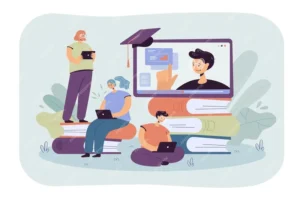Online Safety for K-12 Students: Protecting Children in the Digital Classroom

The integration of technology into K-12 education has brought countless benefits, but it has also raised concerns about online safety for students. As digital classrooms become increasingly common, it’s crucial to ensure that children are protected in their online learning environments. This article explores the importance of online safety for K-12 students and provides essential tips for safeguarding their digital experiences.
Contents
Understanding the Digital Landscape:
The digital classroom presents a unique set of challenges when it comes to student safety. Unlike traditional classrooms, where teachers can closely monitor students, online learning environments offer more anonymity and independence. This shift requires a proactive approach to online safety.
The Importance of Online Safety:
- Protecting Personal Information: Students may be required to share personal information, such as their names, ages, or school names, while participating in online classes. It’s essential to ensure this information remains confidential to prevent potential risks.
- Preventing Cyberbullying: Online spaces can facilitate cyberbullying, which can harm a child’s emotional well-being. Educators and parents must work together to identify and address instances of cyberbullying promptly.
- Filtering Inappropriate Content: The internet is a vast repository of information, some of which may not be suitable for children. Implementing content filters can help prevent students from accessing inappropriate material.
- Teaching Digital Citizenship: Promoting responsible online behavior and digital citizenship is essential. Students should understand the potential consequences of their actions online.
Tips for Ensuring Online Safety:
- Parental Involvement: Parents should take an active interest in their child’s online activities. Regular conversations about online safety and setting boundaries can help children navigate the digital world safely.
- Privacy Settings: Ensure that privacy settings on digital platforms used for education are appropriately configured to protect personal information.
- Cyberbullying Awareness: Teach students to recognize and report cyberbullying. Encourage open communication if they encounter bullying.
- Content Filtering: Schools should implement content filtering systems to block inappropriate websites and materials.
- Secure Passwords: Emphasize the importance of strong, unique passwords and the necessity of not sharing them with anyone.
- Digital Literacy: Incorporate digital literacy lessons into the curriculum to help students discern credible sources, spot fake news, and understand online privacy.
- Reporting Mechanisms: Schools should have clear reporting mechanisms in place for students and educators to report any safety concerns.
- Online Etiquette: Teach students about proper online etiquette, emphasizing kindness, respect, and empathy in digital interactions.
- Monitoring Tools: Some monitoring tools allow educators to track students’ online activities during virtual classes, helping ensure their safety.
Success Stories:
Several organizations and initiatives are dedicated to online safety for students. These efforts include the development of educational resources, software tools for monitoring online activities, and community awareness campaigns.
Conclusion:
Online safety for K-12 students is a shared responsibility among educators, parents, and policymakers. It requires ongoing education, awareness, and proactive measures to create a secure digital learning environment. By prioritizing online safety, we can harness the benefits of digital education while protecting our children from potential risks in the digital world.









